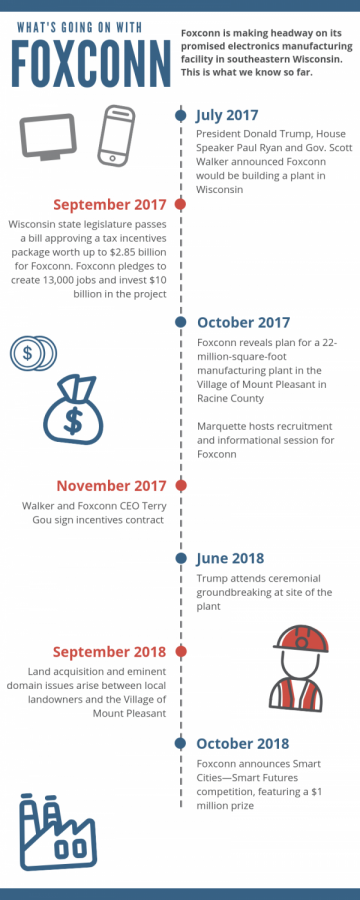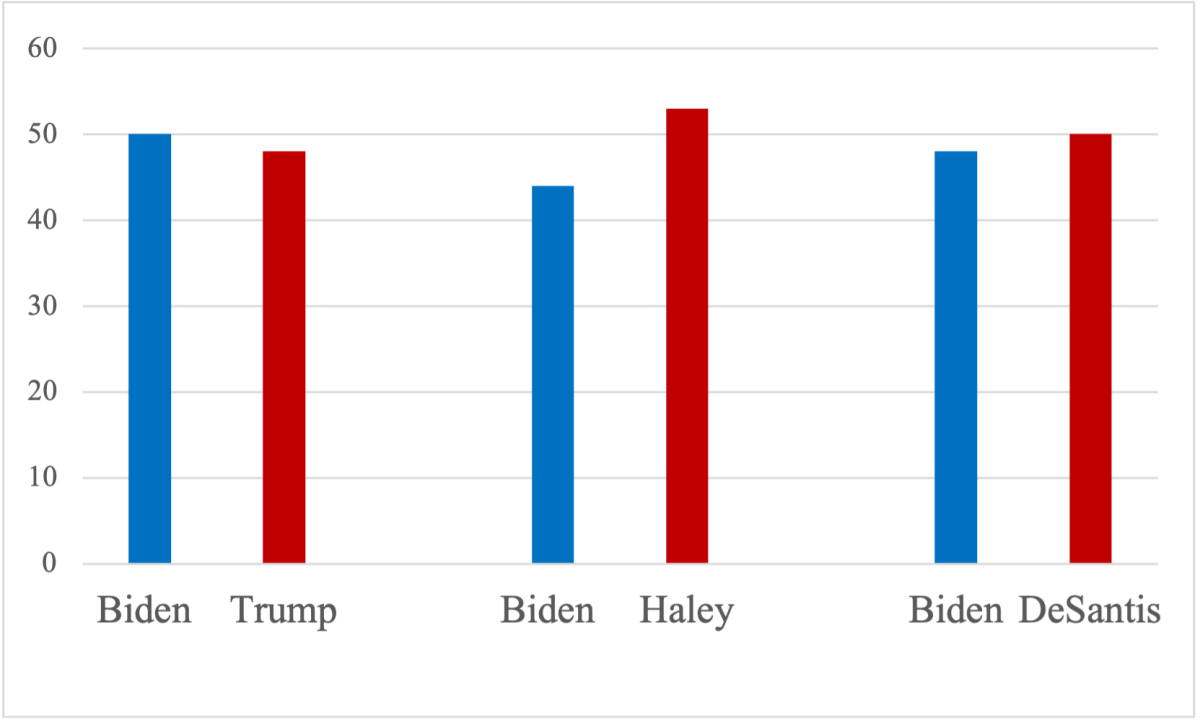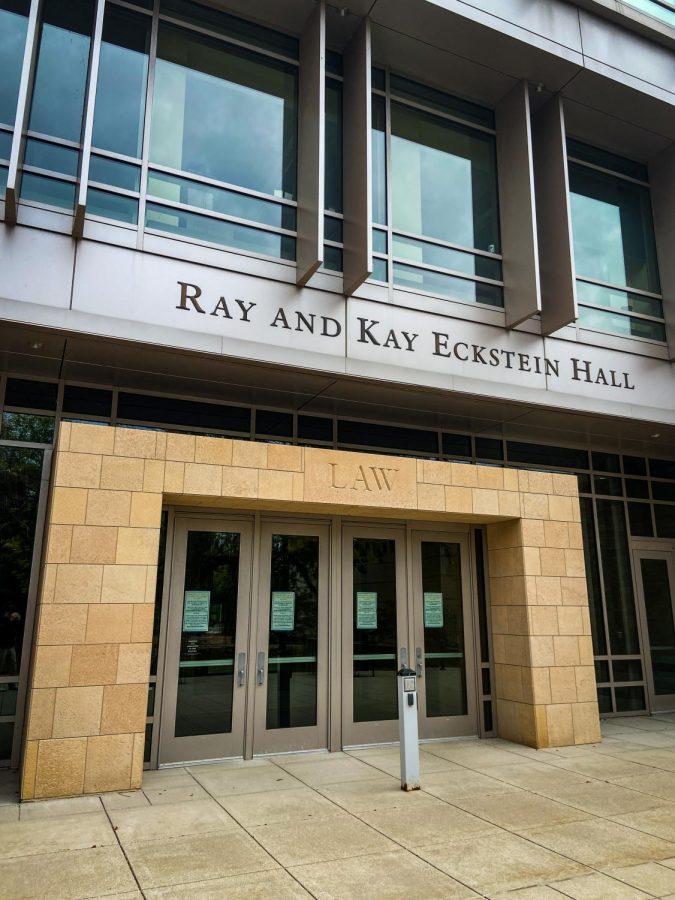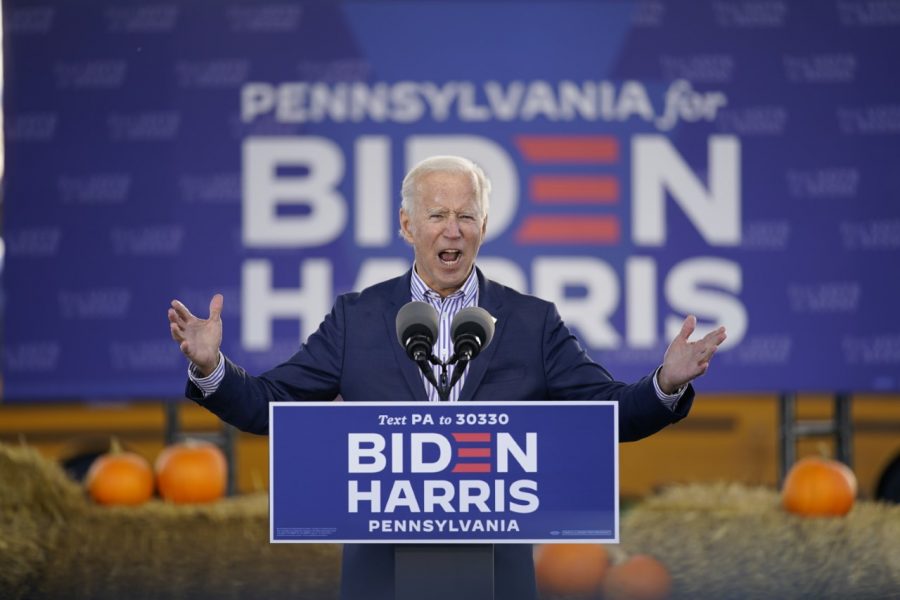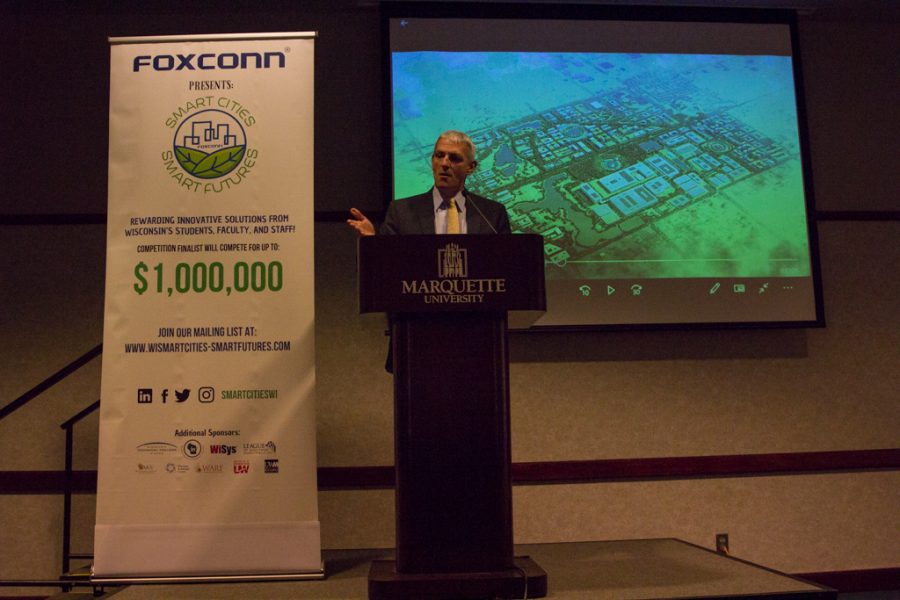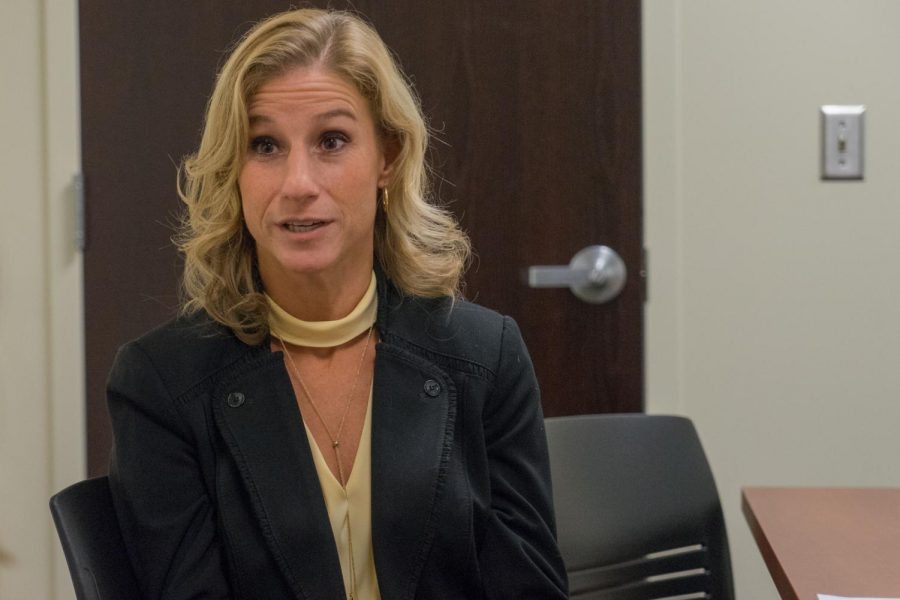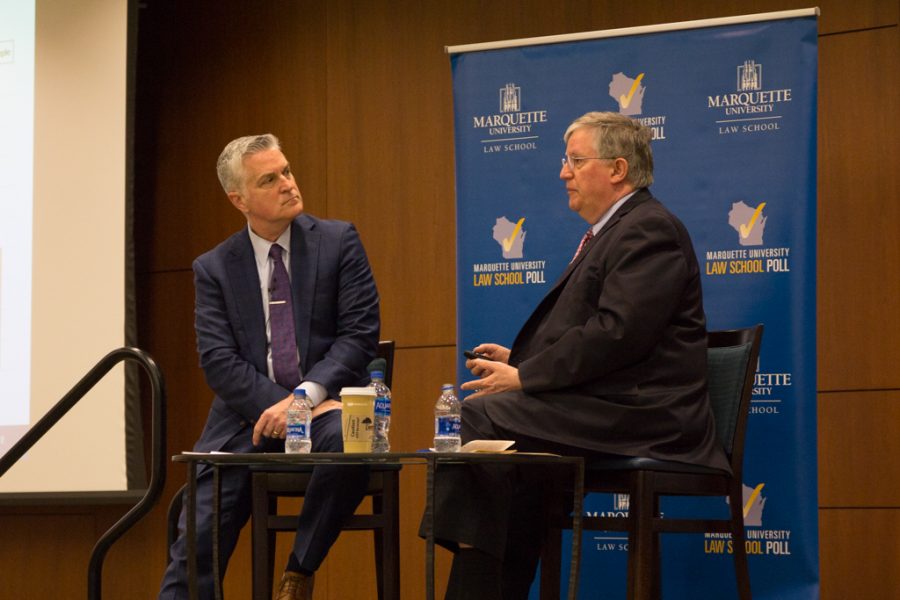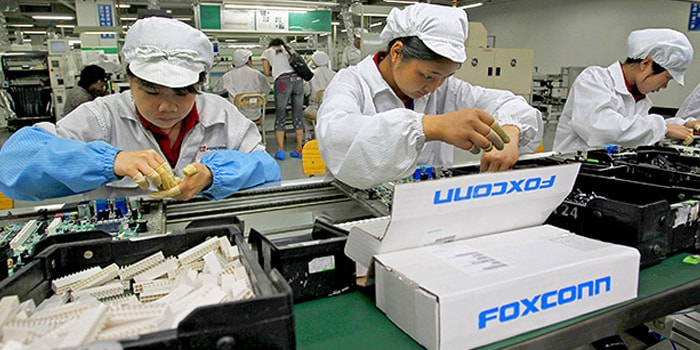Construction on the long-anticipated Foxconn Technology Group manufacturing plant cannot begin until next summer, but that doesn’t mean the project is stagnant.
Since its announcement in summer 2017, the project has steadily progressed every month.
In July 2017, President Donald Trump, House Speaker Paul Ryan, Gov. Scott Walker and others announced at the White House that Foxconn would be building a plant in Wisconsin.
By September 2017, the Wisconsin state legislature passed a bill that approved a tax incentives package worth up to $2.85 billion for Foxconn and created an Electronics and Information Technology Manufacturing Zone for Foxconn to operate in. In return, Foxconn is expected to create 13,000 jobs and invest $10 billion in the project.
The next month, Foxconn revealed its plan for a 22-million-square-foot manufacturing plant to be built in the Village of Mount Pleasant in Racine County.
Marquette University hosted a recruitment and informational session for current college students in the area. University spokesperson Chris Jenkins said Marquette has no plans to host more recruitment events or technology showcases like the one in fall 2017, but Foxconn will still have a presence on campus.
“We welcome their presence because it directly benefits our students,” Jenkins said in an email.
Additionally, Marquette officials said they have been in communication with Foxconn representatives and support the company’s vision for Wisconsin.
“Marquette’s leadership team has been meeting with Foxconn’s top North American officials and has full confidence in both the partnership and in Foxconn’s overall vision for Foxconn’s Wisconsin headquarters,” Jenkins said in an email.
By the end of the year, all of the contracts, including the promised incentives contract between the state and Foxconn, and the development agreement between the company and Racine County had been signed.
In April, the Wisconsin Department of Natural Resources issued air permits to Foxconn for the plant and approved an additional 7 million gallons of water per day to be diverted from Lake Michigan through the City of Racine to the Village of Mount Pleasant for the Foxconn plant. According to a press release issued by the Wisconsin DNR, the additional water would result in a 0.07 percent increase in total water diversion, which is still below its withdrawal capacity.
By June, all parties were set to begin building the plant, and President Trump attended a ceremonial groundbreaking. That same month, Foxconn purchased a seven-story building in downtown Milwaukee to serve as its North American headquarters, promising 500 additional jobs. Mayor Tom Barrett said in a statement, “Adding an international business presence to our central business district is yet another example of the strength of the Milwaukee Renaissance.”
In September, the Village of Mount Pleasant hit a few roadblocks in its land acquisition project for the plant. It threatened and then recalled the threat of employing eminent domain against local landowners who declined to sell to Foxconn for construction. In a press release from April of this year, the Village of Mount Pleasant said, “The Village will continue to diligently pursue all reasonable efforts to reach agreements with individual property owners. If eminent domain is to be utilized, it will be only as a last resort if all other means of acquisition fail.”
Eminent domain efforts primarily include giving homeowners $50,000 per acre of land, 140 percent of appraised value for houses and a relocation package.
Also in that month, Foxconn looked to develop sites in Green Bay and Racine and invested
So far this month, the DNR fined Foxconn for stormwater problems at the construction site after September flooding. As part of the corporation’s agreements with the state, Foxconn was supposed to compose and engineer a stormwater diversion plan. It was fined after the DNR determined that the pond constructed to hold the runoff water was not finished before construction began.
The company also sent representatives to Marquette to announce its Smart Cities — Smart Futures Competition, which includes $1 million in prize money. Jenkins said the goal of the competition is “to develop smart, connected communities and systems with a focus on smart mobility, smart buildings, smart homes, smart energy and smart health, as well as quality of life, efficiency, productivity and management of resources.”
It has been over a year since the tax incentives were approved, but Wisconsin voters are still split over whether or not the state’s investment in the corporation will pay off.
One measure of this trend is the Marquette Law School Poll. In the latest poll, 48 percent of voters said they think the state is paying more than Foxconn is worth, and 38 percent said they think the plant will provide as much profit as the state is investing. Sixty-one percent of those polled said Foxconn will improve the economy of the greater Milwaukee area, and 30 percent said they do not think it will.
Charles Franklin, who has directed the poll since its inception in 2012, began including questions in the poll about Foxconn’s potential impact after the project was announced.
“At this point, it is impossible to know how Foxconn will turn out 10 years from now,” he said. ” So people either say they are unsure or make their best guess. Partisanship plays a big role in structuring expectations, so Republicans are more positive and Democrats more negative. For the most part, views of Foxconn reinforce partisanship.”
Foxconn projects the plant will be complete in 2021. It has already begun to fill a percentage of its 13,000 promised job opportunities through construction and contract workers.

